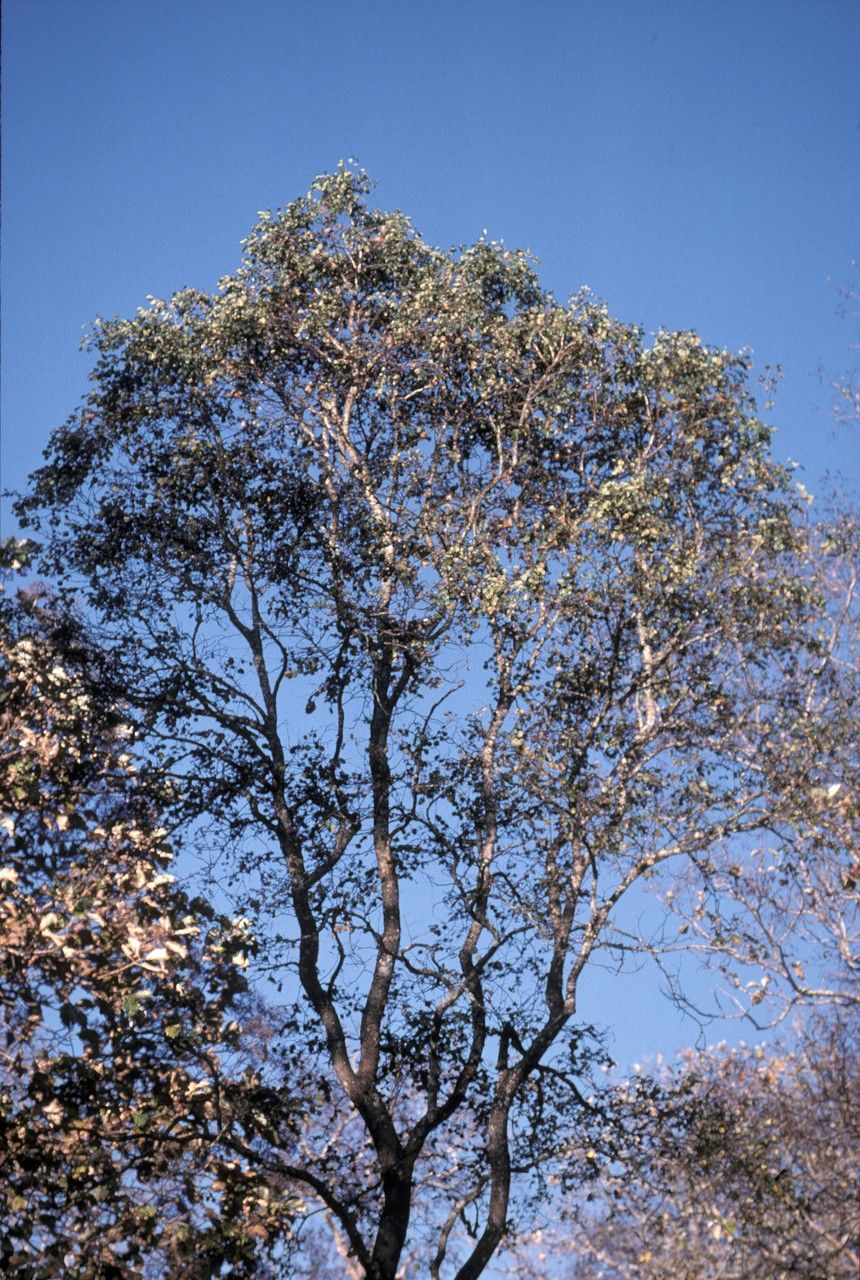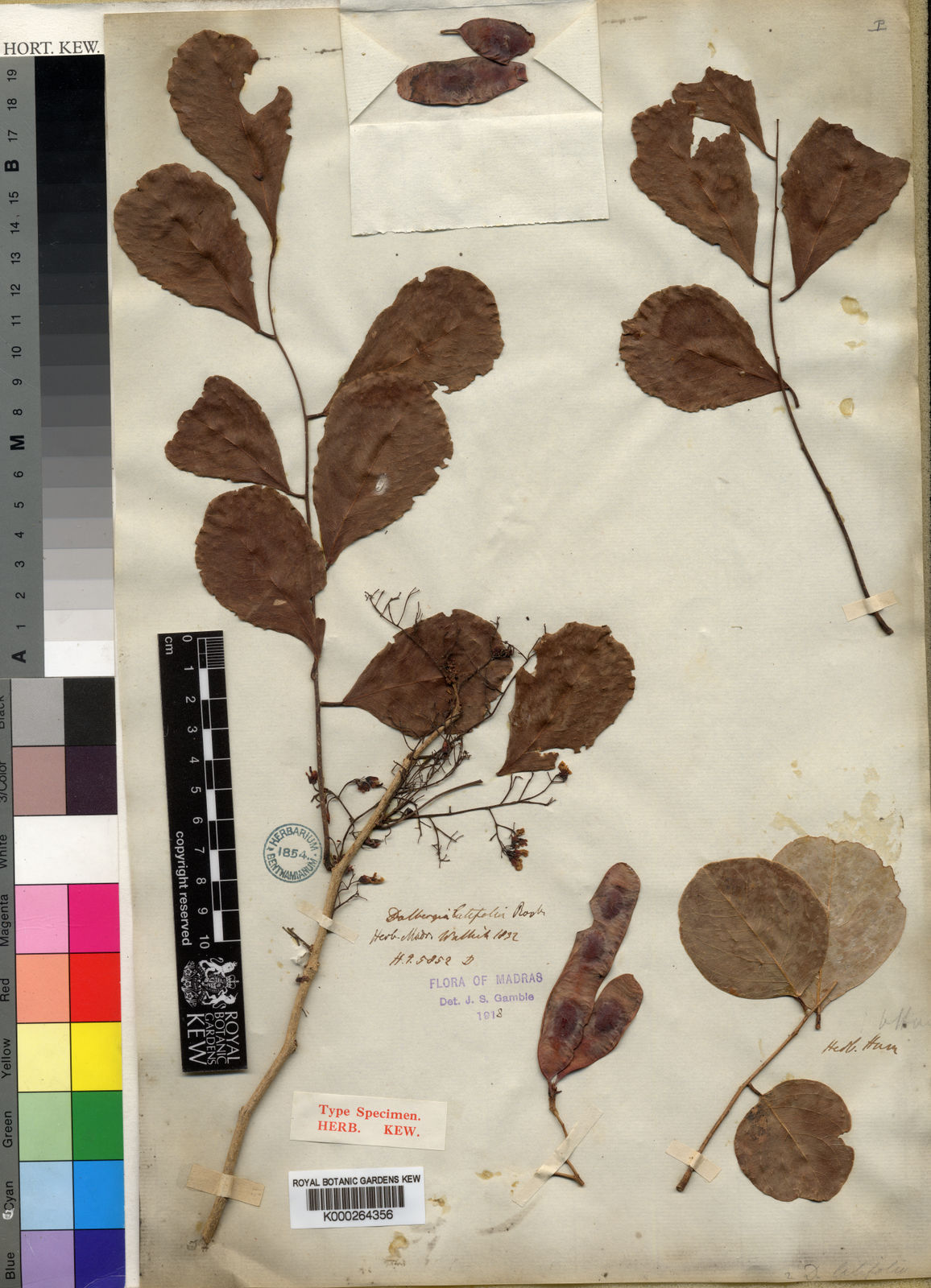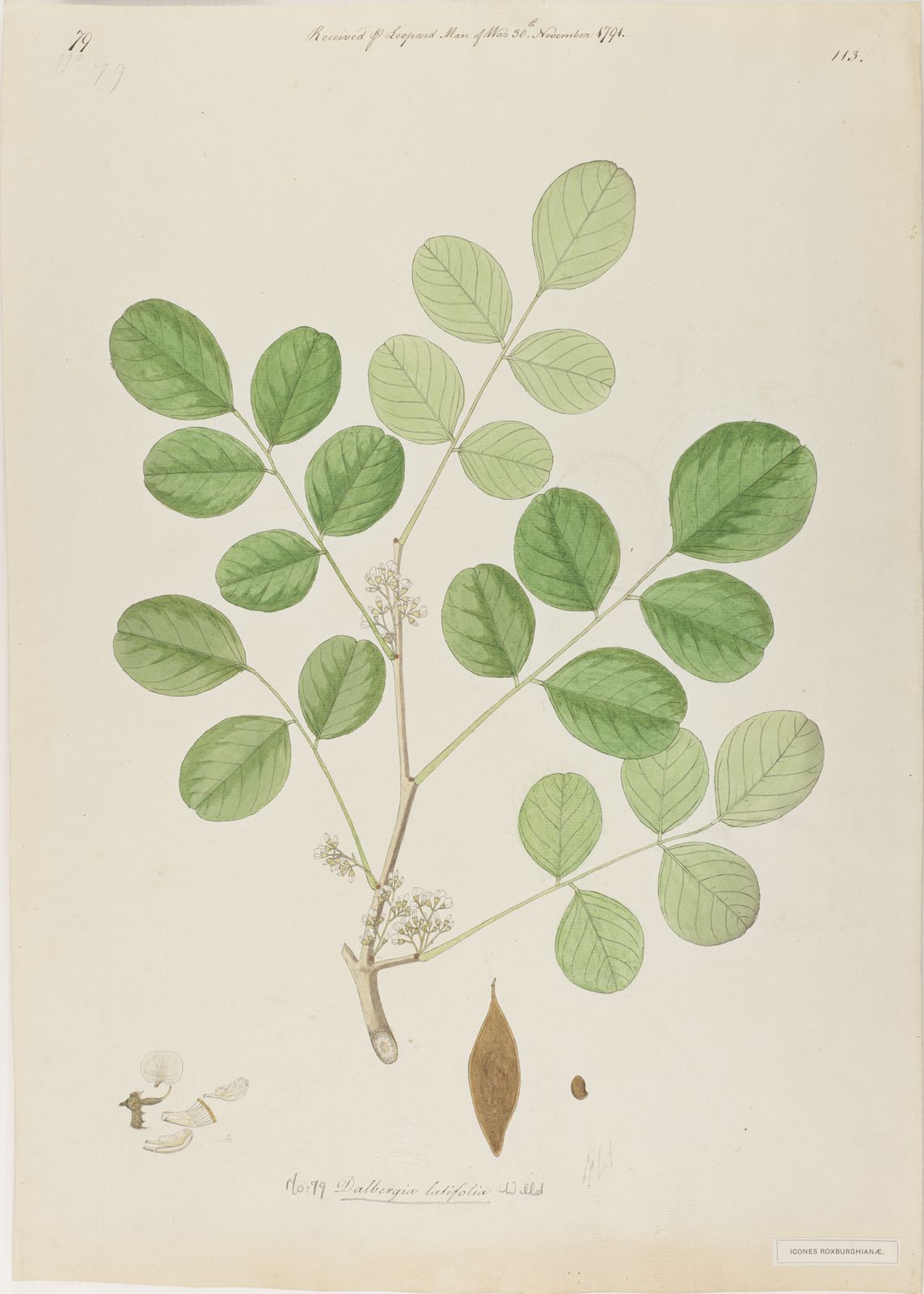East Indian Rosewood
dalbergia latifolia
Also known as: ["Bombay Blackwood","Java Palisandre","Sonokeling"]
Overview
A large deciduous tree native to the Indian subcontinent, valued for its durable, dark-colored timber.
Benefits & Perks
["disease resistant","aesthetic foliage","rare/collector’s item"]
Botanical Classification
| Phylum: | Magnoliophyta |
| Class: | Magnoliopsida |
| Order: | Fabales |
| Family: | Fabaceae |
| Genus: | Dalbergia |
| Botanical Name: | Dalbergia latifolia |
Plant Characteristics
Basic Information
- Category: Trees
- Suitable Location: outdoor garden in warm climates, or large indoor pot in bright, airy spaces
- Suitable For:
- Is Weed: No
- Allergenicity: low
Environmental Needs
- Climate: {"temperatureRange":"15–35°C"}
- Hardiness: {"zones":"9–11"}
- Misting: rarely required, only if ambient humidity drops below 40%
- Drainage: Fast-draining to prevent waterlogging.
- Soil Type: Well-draining potting mix with added perlite or sand for aeration.
Maintenance Level
- Maintenance Level: moderate
- Toughness Level: high
- Pruning Frequency: Annually in late winter or early spring before new growth begins.
- Pruning Intensity: Moderate; remove up to one-third of old growth to rejuvenate the plant.
Care Details
Ideal Sunlight Coverage:
Bright indirect light for 6–8 hours daily; tolerates some direct morning sun but prefers shade from intense afternoon sun.
Sunlight Tolerance Tips:
Acclimate slowly to direct light to avoid scorching; place in a spot with dappled sunlight if outdoors; indoors, use sheer curtains to filter intense light.
Care Requirements
Care Difficulty
moderatemoderate
Sunlight
full sun to partial shade
Rotate plant weekly for even growth; avoid direct afternoon sun; provide bright indirect light.
Watering
every 7–10 days during active growth, reducing to every 14–21 days in winter
Water thoroughly until it drains from the bottom; allow soil to dry between waterings; avoid overwatering.
Soil
well-draining, loamy soil with moderate organic content
pH: Slightly acidic to neutral (pH 6.0–7.0).
Ensure pots have drainage holes; avoid compacted soil; refresh soil every 2 years.
Temperature
Prefers 65–85°F (18–29°C); tolerates mild fluctuations but dislikes extreme cold or heat.
Protect from drafts; maintain moderate temperatures; avoid sudden temperature changes.
Fertilizing
every 4–6 weeks during spring and summer with balanced liquid fertilizer, none in winter
Fertilize only when actively growing; flush soil occasionally to prevent salt buildup; use a balanced formula.
Propagation
Methods
Stem cuttings or seeds; stem cuttings are more common for home growers.
Step-by-Step Propagation Guide
- Take a 4–6 inch cutting.
- Remove lower leaves.
- Dip in rooting hormone.
- Plant in medium.
- Maintain humidity.
Best Time: Spring or early summer when the plant is actively growing.
Environment
High humidity (70–90%), warm temperatures (75–85°F), and indirect light.
Medium
Well-draining mix of peat, perlite, and sand; can also use rooting hormone powder.
Hormone
Recommended to use rooting hormone for faster and more reliable rooting.
Timeline
Roots may develop in 4–8 weeks; establishment can take several months.
Tools Needed
Pruning shears, rooting hormone, small pots, plastic wrap or propagator, misting bottle.
Quick Tips
Use healthy, non-flowering stems; keep consistently moist but not waterlogged; provide bottom heat if possible.
Pruning & Repotting
Pruning Guide
Method
Use clean cuts just above a leaf node or branch junction; avoid leaving stubs.
Pruning Plan
Prune to maintain shape, encourage bushier growth, and remove dead or diseased wood.
Tools
Pruning shears, sterilizing solution, gloves.
Checklist
Sterilize tools; prune dead/diseased wood first; make clean cuts; dispose of clippings.
Repotting Guide
Best Season
Early spring before active growth starts.
Pot Size
Choose a pot one size larger (2–3 inches wider) than the current one.
Method
Remove plant gently; trim roots if necessary; place in new pot with fresh soil; water lightly.
Suggestions
Repot every 2–3 years or when roots fill the pot; necessary to refresh soil and provide space.
Checklist
Prepare new pot; trim roots if crowded; use fresh soil mix; water after repotting.
Advanced Care Tips
Watering Mastery
Watering Checklist
Check soil moisture; water deeply; ensure drainage; adjust for season.
How to Apply Water Properly
Water directly at the root zone, ensuring even moisture distribution; water early in the morning to reduce evaporation; ensure excess water drains away to prevent waterlogging.
Watering Schedule Tips
Water deeply once the top inch of soil feels dry; reduce frequency in winter to prevent root rot.
Soil Improvement
Add perlite or coarse sand to improve drainage; incorporate organic matter like compost for fertility.
Temperature Stress Management
Signs of Temperature Issues
Yellowing leaves, leaf drop, or stunted growth in cold; wilting or scorched leaves in heat.
Cold Stress
Slows growth, causes leaf drop, and can lead to root damage if temperatures drop below 50°F (10°C).
Solution: Move to a warmer location; use a space heater if necessary; insulate roots with mulch.
Hot Stress
Leaves may wilt, curl, or scorch; growth may slow due to excessive water loss.
Solution: Provide shade during peak heat; increase humidity with misting; water more frequently but avoid waterlogging.
Fertilizing Guide
Fertilizing Checklist
Check growth phase; dilute fertilizer; apply to moist soil; avoid winter feeding.
Fertilizing Method
Use balanced liquid fertilizer diluted to half strength every 4–6 weeks during growing season (spring/summer); avoid fertilizing in winter.
Common Problems & Solutions
Toxicity Warning
Cats
Slightly ToxicCats may experience mild gastrointestinal distress if they ingest parts of Dalbergia latifolia. The sap can also cause skin irritation upon contact.
⚠️ Symptoms:
🌿 Toxic Parts:
⚡ Toxic If:
if ingested
Dogs
Slightly ToxicIngestion of Dalbergia latifolia wood or sap may cause mild gastrointestinal upset in dogs. The wood dust can also be irritating if inhaled.
⚠️ Symptoms:
🌿 Toxic Parts:
⚡ Toxic If:
if ingested
Humans
Slightly ToxicThe sap and wood dust of Dalbergia latifolia can cause mild irritation and allergic reactions in some individuals. The wood dust is particularly problematic for woodworkers, as it can lead to respiratory issues upon inhalation.
⚠️ Symptoms:
🌿 Toxic Parts:
⚡ Toxic If:
if ingested or if skin contact occurs with sap
Frequently Asked Questions
Q: Is East Indian Rosewood suitable for indoor growing?
A: No, it is a large tree requiring outdoor space.
Q: Is the wood of Dalbergia latifolia valuable?
A: Yes, it is highly prized for furniture, musical instruments, and decorative items.
Q: Does this plant attract wildlife?
A: It can attract pollinators, but it is primarily grown for timber.
Quick Reference
| Family: | Fabaceae |
| Care: | moderate |
| Light: | full sun to partial shade |
| Water: | every 7–10 days during activ |
Get Expert Care Tips
Download the Plantious app for personalized care reminders and plant identification!
Google Play App Store








